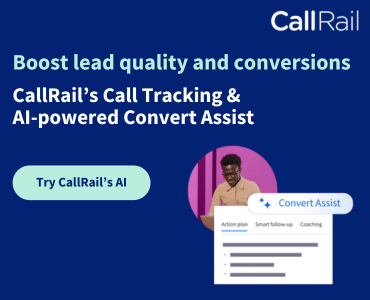Discover how to implement agile law in your practice. Learn 5 practical strategies for a lean, efficient law firm. Improve client satisfaction and streamline operations.

Table of contents
Forgive me for pointing out the obvious, but we live in a time of great uncertainty. Across the board, industries are being turned upside down, and it’s happening to law as well. Technology is altering the landscape, and our environment is changing at an unprecedented rate. If you are not aware of how your own environment has changed within the past several years, then your ability to succeed in the future is at risk. So, how can law firms navigate this dynamic landscape?
The answer lies in ‘agile law,’ a methodology that applies the principles of agility and lean management to legal practice. Essentially, agile law is about embracing flexibility, iterative improvement, and client-centricity. It means breaking down complex legal projects into manageable increments, fostering collaboration, and continuously adapting to changing circumstances. By adopting agile principles, law firms can enhance efficiency, improve client satisfaction, and navigate the challenges of the modern legal environment. Here are five practical strategies for implementing agile practices in your law firm, enabling you to thrive in a dynamic and competitive market.
1. Start by Becoming Self-Aware
When you’ve worked with a lot of law firms, you can tell right away which lawyers will thrive and which will merely survive (or worse). The ones who are happy and do well are those able to pull their heads out of day-to-day combat and survey the landscape.
How often do you step out from the trenches of day-to-day business to look at how your practice is doing? How do you even know how you’re doing? What key performance indicators (KPIs) do you track? Do you do strategic planning once a year, or once a quarter? Who are your star performers and who are your weak links — and can you back up those observations?
The first step in adapting to change is being able to see how you’re doing, and having a framework in place to plan.
2. Commit to Incremental Improvement
If you’re reading this post, there’s a good chance you’re a change agent in your organization. (You might be the only agent in your organization if you’re a solo.) If you’re the lone voice for change in a law firm, it can get nasty. You may be dealing with people with turf to protect, people stuck in their ways, egomaniacs who yell and scream, and political operatives who stab people in the back. How can you possibly effect widespread change in such an organization?
The answer is incremental improvement. Teeny-tiny changes seem innocuous, but when well planned they can have transformative effects.
Increments and iterations are at the core of lean, agile modern management techniques. The idea is that you work for a specified and agreed-on amount of time with clear goals in mind and you measure your results. Then, you head into another iteration with awareness, self-reflection and adjustments — and you improve.
3. Work-in-Progress Queues
Work-in-progress (WIP) queues originate from a management methodology known as “Kanban” and are common in lean businesses. The idea of a WIP queue is that by limiting the number of projects that are in any one stage of activity, you can increase the overall throughput of the firm.
You end up identifying where your bottlenecks are and can deploy resources to alleviate what’s holding up the team. To effectively visualize and manage your WIP queues, consider using these Kanban-style project management tools, which are particularly useful for law firms:
Trello
Trello is a versatile and user-friendly option. It allows you to create customizable Kanban boards, assign tasks, and track progress visually. Its flexibility makes it suitable for various legal workflows.
Asana
Asana offers robust project management features, including Kanban boards, task dependencies, and reporting capabilities. It’s well-suited for managing complex legal projects and collaborating with team members.
Monday.com
Monday.com provides a visually appealing and intuitive platform for managing legal projects. It offers customizable workflows, automation features, and integrations with other legal tools.
ClickUp
ClickUp is a highly customizable platform that combines Kanban boards, task lists, and other project management features. It offers extensive reporting and analytics capabilities.
Legal-Specific Project Management Software
Many legal practice management software platforms, such as Clio Manage, PracticePanther, and MyCase, include built-in Kanban-style features or integrations with project management tools. These platforms often provide specific features tailored to legal workflows, such as case management, document management, and time tracking.
When choosing a Kanban tool, consider factors such as ease of use, customization options, integration with existing legal software, and reporting capabilities. By using these tools, law firms can effectively visualize their workflows, identify bottlenecks, and improve overall efficiency.
4. Employ Agile Meeting Content and Rhythms
Meetings suck the life out of people and are highly inefficient. Use them with care and keep them short. Two types of meetings I recommend are the retrospective and daily standup meetings.
The Retrospective. (Time: 30 minutes monthly or quarterly.) During the retrospective, participants spend 30 minutes asking themselves three questions:
- What should we start doing?
- What should we stop doing?
- What should we continue doing?
The retrospective is analogous to the team climbing a mountain together and meditating for 30 minutes from a 10,000-foot view of the practice. Should we tweak the client intake system? Should we schedule better reminders with clearer messages? Should we stop ordering Chinese food at 3:00 in the afternoon?
Take care that the retrospective does not become a session to vent frustrations or a chance to whine and complain. A skilled moderator who has the respect and confidence of the group should guide the discussion and take notes.
Similar meetings that can achieve analogous results include a SWOT analysis (strengths, weaknesses, opportunities and threats) or the speedboat game. To discover more, take a look at this post on the Innovation Games blog.
The Daily Standup. (Time: 10 minutes per workday.) Each day the team checks in for a brief “standup” meeting, so named because the participants are required to stand to keep the meeting short. Each individual states three things:
- What they did yesterday
- What they’re doing today
- What’s in their way
To keep the meeting short, you can eliminate the “yesterday” portion of each person’s announcement. People should keep their update to one minute, max.
You keep people accountable by hearing about what they did yesterday and today, and you keep the ball moving by removing dependencies identified by the “what’s in my way” piece. Then, it’s up to group leadership to keep the team forging ahead by eliminating obstacles.
5. Use Your KPIs to Make Data-Based Decisions
What KPIs does your team actively track? A lot of law firms start with the billable hour. While billable hours are important, relying solely on them provides an incomplete picture of your firm’s performance. Let’s explore a broader range of KPIs and how to track and analyze them.
Key Performance Indicators (KPIs) for Law Firms:
- Financial KPIs:
- Billable Hours: Track total billable hours per attorney, practice area, and client. Use this to assess productivity and identify areas for improvement.
- Realization Rate: Calculate the percentage of billable hours that are actually billed. This helps identify write-downs and inefficiencies in time tracking.
- Collection Rate: Determine the percentage of billed amounts that are collected. This reflects the effectiveness of your billing and collection processes.
- Revenue per Attorney/Practice Area: Measure the revenue generated by each attorney or practice area. This indicates profitability and helps allocate resources effectively.
- Client Acquisition Cost (CAC): Calculate the cost of acquiring a new client. This helps evaluate the efficiency of your marketing and business development efforts.
- Client Lifetime Value (CLTV): Estimate the total revenue generated by a client over their relationship with your firm. This helps prioritize client relationships and allocate resources accordingly.
- Overhead Costs: Tracking overhead costs is vital to understanding the true cost of providing services.
- Client-Centric KPIs:
- Client Satisfaction Score (CSAT): Measure client satisfaction through surveys or feedback forms. This provides insights into client perception and helps identify areas for improvement.
- Net Promoter Score (NPS): Determine the likelihood of clients recommending your firm. This gauges client loyalty and advocacy.
- Client Retention Rate: Track the percentage of clients who continue to use your services. This reflects client satisfaction and loyalty.
- Case Resolution Time: Measure the average time it takes to resolve a case. This indicates efficiency and responsiveness.
- Client Communication Frequency/Responsiveness: Track how often and how quickly you communicate with clients. This demonstrates your commitment to client service.
- Operational KPIs:
- Case Load per Attorney: Monitor the number of cases assigned to each attorney. This helps prevent overwork and ensure quality.
- Case Outcome Rate: Track the percentage of cases won or successfully resolved. This reflects the effectiveness of your legal strategies.
- Risk Assessment Metrics: Measure the effectiveness of your risk management processes.
- Website Traffic and Engagement: Track website visitors, page views, and time spent on site. This helps evaluate the effectiveness of your online marketing efforts.
- Lead Generation: Measure the number of qualified leads generated per month. This indicates the effectiveness of your business development efforts.
- Employee Turnover Rate: Track the rate at which employees leave your firm. High turnover can indicate issues with morale or management.
Tracking and Analyzing KPIs:
- Use Legal Practice Management Software: Implement software that automates data collection and reporting. Many platforms offer customizable dashboards and reports.
- Regular Reporting: Establish a schedule for regular KPI reporting (e.g., weekly, monthly, quarterly).
- Data Visualization: Use charts and graphs to visualize KPI trends and patterns.
- Identify Trends and Patterns: Analyze KPI data to identify trends, patterns, and areas for improvement.
- Set Targets and Goals: Establish clear targets and goals for each KPI.
- Take Action: Use KPI insights to make informed decisions and implement changes to improve performance.
- Regular Reviews: Routinely review your KPI’s to ensure they are still relevant to your firms goals.
Knowing the numbers that affect your business will tell you if you’re headed in the right direction. Plus, knowing the cold hard facts can help eliminate passionate arguments. If it’s in the data, you know which way to head.
Parting Words: Don’t Be Surprised If Your Team Composition Changes
As your firm embraces agile principles and data-driven decision-making, you’ll gain a clearer understanding of your team’s strengths and areas for development. This enhanced visibility fosters a culture of accountability and continuous improvement, where everyone is empowered to contribute to the firm’s success. While some team members may naturally thrive in this environment, others might require additional support, training, or adjustments to their roles.
The goal is not to create a culture of fear, but rather a culture of growth. By providing resources and opportunities for development, you can help your team adapt and excel. Remember, the strength of your firm lies in its ability to adapt and evolve.















